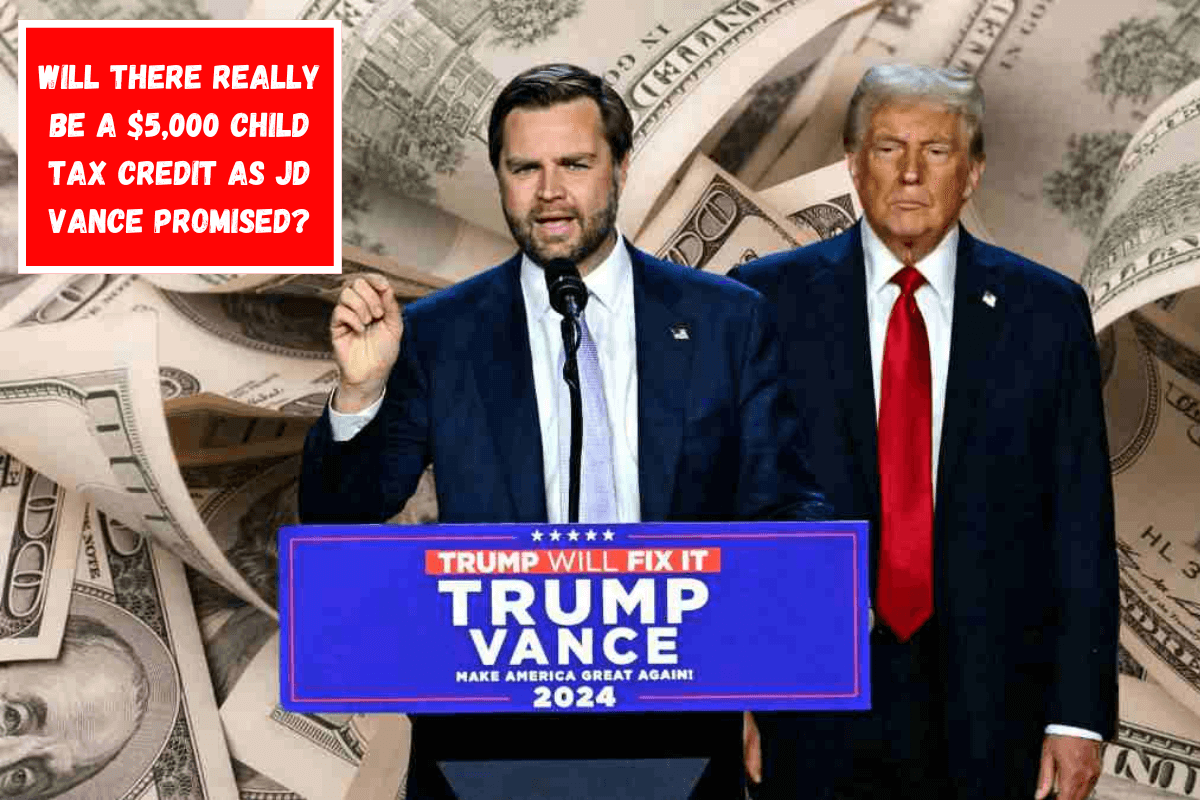Following Donald Trump and JD Vance‘s recent election victories, one of the most talked-about campaign promises is the projected increase in the Child Tax Credit, which Vance pledged to raise to $5,000. In his remarks, the newly elected Vice President supported this proposal as a way to alleviate financial burdens on families.
However, now that the election has been won, the key question is whether he can actually put it into action and what effect this policy would have on the federal budget.
Throughout his campaign, JD Vance emphasized his desire to boost the kid Tax Credit from its current $2,000 to $5,000 per kid. Vance stated that this considerable rise would assist families of all income levels, including low- and high-income households.
He also recommended eliminating the income cap, which presently decreases the benefit for those earning more than $200,000 per year (or $400,000 for couples).
JD Vance’s proposal: a $5,000 child tax credit
Vance proposes a family support system that does not take money into account, thinking that every family deserves equal financial support. This is consistent with his “pro-family” attitude, which seeks to benefit all American families with children. While the plan seems good, it raises serious issues about its cost and viability.
How much would this measure cost?
The Committee for a Responsible Federal Budget believes that Vance’s idea might increase the national debt by $2 to $3 trillion over the next decade. This exorbitant expense emerges because such a big increase in the Child Tax Credit would necessitate a massive federal outlay.
Furthermore, Vance has not stated if his idea would be fully refundable, which means that families would receive the full credit amount as a refund even if they did not owe enough taxes to cover it. This is a crucial point because a fully refundable credit would be much more expensive. The lack of clarity on this point has prompted some economists to question the measure’s actual practicality.
Marc Goldwein, policy director for the Committee for a Responsible Federal Budget, stated that without a precise plan, it is difficult to determine the proposal’s actual impact on the federal budget. Implementing a $5,000 credit without a thorough review may represent a long-term budgetary risk to federal viability.

Can JD Vance fulfill his promise?
Now that JD Vance has a position that allows him to advance his proposition, there are various roadblocks that could hinder its implementation. The idea would require legislative approval, which could be tough given concerns over the federal debt. Furthermore, some critics note that Vance opposed a recent Senate plan to enhance the tax credit for low-income families.
His lack of support at that time has left some questioning his true commitment to this issue.
Senator Ron Wyden, one of the primary proponents of the failed credit expansion, remarked that if Vance was truly devoted to helping working people, he would have supported the prior proposal. Despite his pro-family rhetoric, Wyden is skeptical that Vance will be able to keep his pledges now that he is in power.
Economic relief for families, but would it effectively encourage birth rates?
Aside from financial support, Vance has pitched his plan as a mechanism for increasing birth rates in the United States. However, other economists stress that, while financial incentives can assist balance some expenses, they rarely have a large impact on decisions to have additional children.
In reality, the overall cost of raising a child in the United States until the age of 18 is projected to be around $240,000, so while $5,000 per year helps, it does not cover all expenses. This limitation reduces the measure’s potential impact on birth rates.
Countries that have attempted to promote birth rates with financial advantages have seen brief gains, but the effect fades with time. For example, nearly two decades ago, Australia established a “baby bonus,” which initially resulted in a tiny increase in births; nevertheless, the birth rate soon plummeted again, demonstrating the ephemeral nature of such incentives.
Genuine family support or a populist measure?
JD Vance’s plan for a $5,000 child tax credit is undeniably ambitious, but some view it as a practical form of assistance for families at a time of economic instability. Others, however, see this policy as a populist ploy that, without substantial financial support, risks becoming an empty promise or an unsustainable expense.
The Trump-Vance administration will have to carefully consider the fiscal implications of enacting this tax credit. The coming months will be critical in determining whether Vance can make his promise a reality, or if his ambitious $5,000 child tax credit will remain an unfulfilled campaign vow.
Also See:- 10 cents for $500,000 as farmer’s rare coin is finally auctioned















Leave a Reply